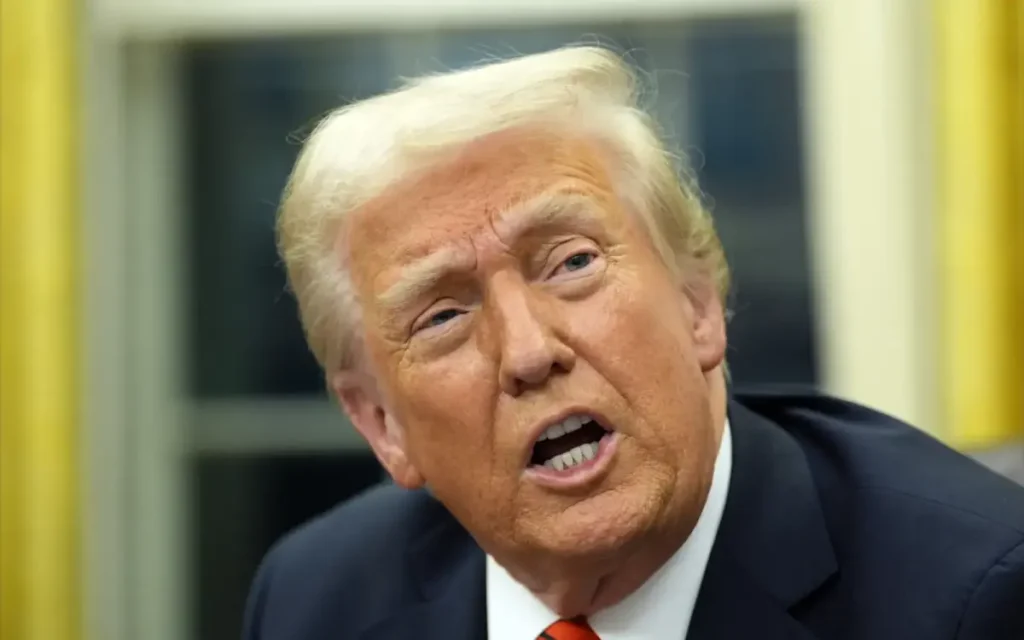Anger, chaos and confusion take hold as federal workers face mass layoffs: During Donald Trump’s presidency, one of the most controversial decision

Anger, chaos and confusion take hold as federal workers face mass layoffs: During Donald Trump’s presidency, one of the most controversial decision
During Donald Trump’s presidency, one of the most controversial decisions was his effort to cut jobs in the federal government. These job cuts have left many government workers angry, confused, and uncertain about their future. Even after Trump left office, the impact of these cuts is still felt today.
Trump’s decision to reduce the size of the government workforce was based on his promise to make the government more efficient. However, the cuts created problems for federal employees and disrupted the work of important government agencies. This blog looks at how the cuts affected federal workers, the chaos they caused, and the lasting confusion employees are still dealing with.
Trump’s Promise to Shrink the Government
Trump’s campaign promise to “drain the swamp” was about reducing the size of the federal government. He argued that cutting government jobs would make it more efficient and save money. After becoming president, Trump took steps to cut back on federal workers. He froze hiring, reduced government budgets, and eliminated positions in several agencies.
The Environmental Protection Agency (EPA), the Department of Housing and Urban Development (HUD), and the Department of Labor were among the departments that saw the biggest job cuts. Trump believed these cuts would improve government performance, but many people disagreed. Critics said the cuts would hurt public services and weaken important government programs.
Anger Among Federal Workers
For many federal workers, these cuts were a huge blow. Thousands of employees lost their jobs, and others were left uncertain about their futures. The way the cuts were handled added to the frustration. Many workers found out about their layoffs suddenly, with little explanation from the government.
Unions that represent federal workers, like the American Federation of Government Employees (AFGE), opposed the cuts. They argued that reducing government jobs hurt public service and workers’ rights. The cuts also created a sense of betrayal, as many employees had dedicated years to their jobs, only to see them disappear without warning.
In addition to layoffs, some workers were reassigned to new positions with unclear responsibilities. This caused confusion as employees struggled to understand what was expected of them in their new roles.
Chaos in Government Agencies
The job cuts caused a lot of confusion and disruption in federal agencies. With fewer workers, agencies struggled to perform important tasks. For example, the EPA, which is responsible for protecting the environment, lost many of its employees, making it harder to enforce environmental rules. Other agencies, like the Department of Housing and Urban Development (HUD), also faced staffing problems that affected their ability to serve the public.
The chaos wasn’t just internal—citizens were also affected. With fewer workers, government agencies were slower to process important services. Tasks like processing tax returns, issuing visas, and handling Social Security claims were delayed, leading to frustration among the public.
On top of that, there was little communication from the government about how the job cuts would affect workers and services. This lack of information made the situation worse, as employees and the public were left to guess how things would play out.
The Ongoing Impact: Uncertainty for Federal Employees
Even though Trump left office in January 2021, the effects of his job cuts continue to affect federal workers. Many positions that were eliminated have not been restored, leaving federal agencies under-staffed. As a result, employees still face uncertainty about their job security.
The job cuts also led to a loss of experienced employees. Workers with years of experience were among those laid off, and their departure left gaps in knowledge and expertise. This makes it harder for agencies to do their jobs effectively, and some employees are now tasked with taking on more work with fewer resources.
Federal workers remain uncertain about the future. They worry that more cuts could come, or that their roles might be restructured. The fear of losing their jobs is still real, and many employees are trying to adapt to a constantly changing environment.
What’s Next for Federal Workers?
Looking ahead, federal workers hope that the new president, Joe Biden, will restore some of the jobs lost during Trump’s administration. Biden has promised to hire more workers and invest in federal agencies. However, rebuilding the workforce will take time, and it won’t be easy.
For many federal workers, the damage from Trump’s job cuts has already been done. Even with a new administration, the effects of these cuts are still being felt. It may take years to fully recover from the job losses and the disruption caused by the cuts.
Conclusion: A Difficult Road for Federal Employees
Trump’s job cuts left many federal employees angry, uncertain, and confused. These cuts affected not just the workers but also the services provided by the government. Agencies that rely on a strong workforce to function have been struggling to meet public needs with fewer employees.
Although the Biden administration is working to restore jobs and improve federal agencies, the legacy of Trump’s cuts still lingers. Federal workers continue to face challenges, and the future of the federal workforce remains uncertain.